| Class: | angiosperms |
| Order: | Lamiales |
| Family: | Scrophulariaceae |
| Genus: | Euphrasia |
| Scientific name: | Euphrasia pectinata Ten. |
| Name acc. to: | Gubanov 1996 |
| Herbar: | list records |
| Synonym: | E. tatarica Fisch. ex Spreng. (acc. to Grubov 1982) |
| Comments: | |
| Link to Flora of China: | http://www.efloras.org/browse.aspx?flora_id=2&name_str=Euphrasia+pectinata |
| open map in a new window | 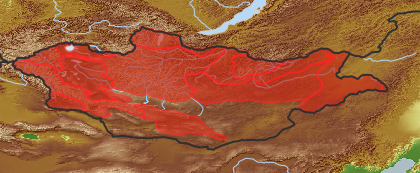 |
| Habitat: | Meadow and steppe slopes, floodplain meadows, shrubberies, larch forests and their fringes, spring swampy meadows and bogs, waterside pepples up to lower part of alpine belt (Grubov 2001). |
| Habit (i)general appearance of a plant | |
| Growth form: (i)Herb, shrub, tree or climber. | annual (i)Completing its life cycle within one year or one growing season; roots weak and thin  inherited by genus Euphrasia: annual inherited by genus Euphrasia: annual
herb (i)Herbaceous, erect plant, up to 2m high, mostly with a leafy shoot; if perennial, shoots die to the ground each season, shoots are not woody
example: Artemisia pectinata   inherited by family Scrophulariaceae: herb inherited by family Scrophulariaceae: herb
|
| Size of plant: (i)Attention: use flowering or fruiting specimens to assess plant height (many biennial plants possess only a basal rosette in the first year). | to 100 mm
from 100 mm to 250 mm
from 250 mm to 600 mm
|
| Parasite status: (i)Is the plant a half- or full parasite? | no parasite/saprophyte (i)Plant fully autonomous, leaves with chlorophyll
example: Most plants, Ranunculus  inherited by genus Euphrasia: no parasite/saprophyte inherited by genus Euphrasia: no parasite/saprophyte
Parasite/saprophyte (i)Plant not or not fully autonomous, leaves often without chlorophyll
example: Cuscuta, Corallorhiza, Epipogium (holomycotrophic)c  inherited by genus Euphrasia: Parasite/saprophyte inherited by genus Euphrasia: Parasite/saprophyte
semi-parasite (i)Plant with chlorophyll in green leaves, but roots suck on other plants
example: Melampyrum, Odontites, Pedicularis  inherited by genus Euphrasia: semi-parasite inherited by genus Euphrasia: semi-parasite
|
| Water or terrestrial plant: (i)Where do the plants grow? | terrestrial (i)Plant grows on dry land
example: Orostachys spinosa  inherited by genus Euphrasia: terrestrial inherited by genus Euphrasia: terrestrial
|
| Leaf (i)expanded, usually photosynthetic organ of a plant (including phylloclades) | |
| Leaf development: (i)Structure and development of leaves. | flattened blade (i)Cross-section of lamina flat, plain  inherited by genus Euphrasia: flattened blade inherited by genus Euphrasia: flattened blade
common leaf (i)Green, often divided in blade and petiole
example: Cotoneaster  inherited by genus Euphrasia: common leaf inherited by genus Euphrasia: common leaf
with green leaves (i)Plant with green leaves  inherited by family Scrophulariaceae: with green leaves inherited by family Scrophulariaceae: with green leaves
|
| Leaf arrangement: (i)Arrangement of leaves at the stem. | opposite, opposite-decussate (i)Two leaves per node
example: Lamiaceae, e.g. Phlomis    inherited by genus Euphrasia: opposite, opposite-decussate inherited by genus Euphrasia: opposite, opposite-decussate
|
| Simple or divided leaves: (i)Are the leaves simple or completely divided in several parts? Blade of the leaf entire or (more or less) deeply dissected. Attention: There are various appearances of the leaf margin (from entire to toothed and lobed). Here, we ignore this and ask only for dissections that separate the leaf for more than one third of its length or width, whatever is smaller. Sometimes, it is difficult to tell apart compound leaves from a shoot system with simple leaves: look for stipulae and/or axillary buds at the ground of the leaves: if only some possess these structures, the others are most likely leaflets of a compound leaf. | simple (i)Non-divided leaf, but margin may be incised nearly to the ground   inherited by genus Euphrasia: simple inherited by genus Euphrasia: simple
|
| Shape of blade: (i)Easy for simple leaves. In compound leaves use the general shape of leaflet. Always check the ground for largest leaves of a plant. To be worked out: how to handle pinnate leaves? | elliptic (including ovate and obovate) (i)Elliptic: broadest at the middle and narrower at the two equal ends; ovate: egg-shaped, attached at the broad end; obovate: attached at the narrower end
example: Limosella aquatica   inherited by genus Euphrasia: elliptic (including ovate and obovate) inherited by genus Euphrasia: elliptic (including ovate and obovate)
|
| Length of leaves: (i)How long is the leaf, be carefull in compound leaves, measure the complete leaf. | from 6 mm to 10 mm  inherited by genus Euphrasia: inherited by genus Euphrasia:
from 11 mm to 20 mm  inherited by genus Euphrasia: inherited by genus Euphrasia:
|
| Width of leaves: (i)How broad is the leaf, be carefull in compound leaves, measure the complete leaf. | 3-5 mm  inherited by genus Euphrasia: 3-5 mm inherited by genus Euphrasia: 3-5 mm
5-10 mm  inherited by genus Euphrasia: 5-10 mm inherited by genus Euphrasia: 5-10 mm
1-3 cm
|
| Leaf apex: (i)Appearance of the tip of leaf resp. leaflets in compound leaves. | acuminate (i)Gradually tapering to a (sharp) point
example: Populus laurifolia? 
|
| Leaf margin: (i)Structure of leaf margin (or that of a leaflet in case of compound leaves). Attention: Here we ask for the leaf margin, defined as all those dissections that separate the leaf for less than one third of its length or width, whatever is smaller. To be worked out: how to handle margin of pinnate leaves? | serrate / dentate / crenulate (i)Margin saw-like or rounded teethed
example: Betula, Lophanthus (crenulate)   inherited by genus Euphrasia: serrate / dentate / crenulate inherited by genus Euphrasia: serrate / dentate / crenulate
coarsely/ sparsely serrate (i)Less than 20 teeth per leaf; usually several lateral veins per tooth 
|
| Leaf base: (i)The angle the leaf blade forms with a real or imaginary (sessile leaves) petiole. Attention: Here, we consider only the base of leaves or leaflets (in case of compound leaves). | broad (i)Angle 30° - 90°
example: Cotoneaster 
cuneate (i)Tapering gradually, angle > 90° - 120°
example: Thalictrum, Betula fruticosa 
|
| Petiole: (i)Leaf divided into stalk (petiole) and blade. | base not surrounding stem (i)Leaf blade not sheathing but base can be semiamplexicaul
example: Veronica anagallis-aquatica, Euphrasia  inherited by genus Euphrasia: base not surrounding stem inherited by genus Euphrasia: base not surrounding stem
without (i)Leaves without petiole (stalk), sessile
example: Poaceae, Iris   inherited by genus Euphrasia: without inherited by genus Euphrasia: without
|
| Stipule: (i)Leaflets at the base of the petiole, these are smaller and of different shape. | none (i)Without stipules
example: Euphorbia, Ericaceae s.l.  inherited by genus Euphrasia: none inherited by genus Euphrasia: none
|
| Leaf veination: (i)Arrangement of the main veins of a leaf. | pinnate (i)One main vein, several side veins, sometimes inconspicuous
example: Cicerbita     inherited by genus Euphrasia: pinnate inherited by genus Euphrasia: pinnate
|
| Flower (i)reproductive portion of the plant, consisting of sepals, petals, stamens, and pistils | |
| Flower appearance and pollination: (i)General appearance of the flower. | attractive, animal-pollinated (i)attractive and coloured flowers, mostly large, attracting surely animals
example: Trollius, Rosa, Chamaerhodos  inherited by family Scrophulariaceae: attractive, animal-pollinated inherited by family Scrophulariaceae: attractive, animal-pollinated
|
| Flower colour: (i)Attention: assess colour of the most colourful parts of the flower, but not of the stamens; be aware of single plants with a mutation (mostly white) on flower colour. | white (i)Most plants of the population white
example: Pleurospermum, Maianthemum  inherited by genus Euphrasia: white inherited by genus Euphrasia: white
pink (i)Between red and white
example: Centaurium  inherited by genus Euphrasia: pink inherited by genus Euphrasia: pink
purple to violet (i)All colors between purple and violet, often changing with flower age
example: Pulmonaria  inherited by genus Euphrasia: purple to violet inherited by genus Euphrasia: purple to violet
|
| Perianth arrangement: (i)Attention: in some plants, flowers may be dimorphic in different ways (dioecious or gynodioecious). If flowers vary, record the characters of the most showy flowers. | double, different (i)Two types of perianth leaves, differently coloured (sepals: outer periant leaves, usually greenish, and petals: inner perianth leaves, usually coloured)
example: Parnassia    inherited by family Scrophulariaceae: double, different inherited by family Scrophulariaceae: double, different
|
| Diameter of flower: (i)Diameter of flower or flower head. | to 5 mm (i)
example: Aruncus  inherited by genus Euphrasia: inherited by genus Euphrasia:
from 5 mm to 10 mm (i)
example: Stellaria  inherited by genus Euphrasia: inherited by genus Euphrasia:
|
| Length of flower: (i)For zygomorphic flowers only, instead of diameter of flower. | to 10 mm  inherited by genus Euphrasia: inherited by genus Euphrasia:
from 10 mm to 20 mm  inherited by genus Euphrasia: inherited by genus Euphrasia:
|
| Flower symmetry: (i)Symmetry of the perianth leaves. Attention: to assess this character, look on sepals, petals and stamens, but neglect carpels and ovary. | zygomorphic (i)One axis of symmetry, monosymmetrical flowers
example: Pedicularis, Nepeta, Viola   
|
| Flower form: (i)common forms of flowers ? Veronica | bilabiate (i)Petals froming two lips, flower usually zygomorphic
example: Lamiaceae, Scrophulariaceae p.p.   inherited by genus Euphrasia: bilabiate inherited by genus Euphrasia: bilabiate
|
| Sepal number: (i)Number of sepal leaves (outer perianth leaves, calyx leaves, mostly greenish). Attention, this character applies only for flowers separated in sepals and petals, thus excluding most monocots. Be aware of the bracts (involucral leaves) of Asteraceae flowerheads, do not qualify these as sepals! Be also aware in Rosaceae is often an epicalyx developed, in this case count all parts. | 4 (i)
example: Sinapis  inherited by genus Euphrasia: 4 inherited by genus Euphrasia: 4
|
| Sepal fusion: (i)To which degree are the sepal leaves connected? Attention, this character applies only for flowers separated in sepals and petals, thus excluding most monocots. Be aware of the bracts (involucral leaves) of Asteraceae flowerheads, do not qualify these as sepals! | fused (i)Leaves united, only tips are free
example: Fabaceae, Silene    inherited by genus Euphrasia: fused inherited by genus Euphrasia: fused
|
| Petal / Tepal number: (i)Number of petal leaves (inner perianth leaves, usually coloured). | 5 (i)
example: Potentilla  inherited by genus Euphrasia: 5 inherited by genus Euphrasia: 5
|
| Petal / Tepal fusion: (i)To which degree are the petal leaves connected? Petals sympetalous. | fused (i)petal leaves united, only tips are free (gamopetalous, sympetalous)
example: Linnaea, Adenophora, Stellera  inherited by family Scrophulariaceae: fused inherited by family Scrophulariaceae: fused
|
| Spur: (i)A hollow, slender, sac-like appendage of the perianth leaves, storing nectar. | no spur (i)Flower without appendage
example: Peganum  inherited by genus Euphrasia: no spur inherited by genus Euphrasia: no spur
|
| Stamen number: (i)Attention: We ask for the reproductive organs of the flower dispersing pollen. Count only fully fertile stamens, not staminodia (e.g. Parnassia). | 4 (i)Extremely rare, may be absent
example: Plantago  inherited by genus Euphrasia: 4 inherited by genus Euphrasia: 4
|
| Stamen fusion: (i)To which degree are the stamens fused? Attention: Whereas the pollen sacs itself are often free., their stalks (filaments) may be fused. Here, we count them as fused if they are together over at least one thirth of their length. | fused with a corolla (calyx in Thymelaeaceae) (i)Stamens with perianth leaves at least one third of the length of the filament
example: Orobanche, Salvia, Stellera  inherited by family Scrophulariaceae: fused with a corolla (calyx in Thymelaeaceae) inherited by family Scrophulariaceae: fused with a corolla (calyx in Thymelaeaceae)
|
| Pistil number: (i)Number of pistils (female floral organs: style, if developed; stigma and carpels/ovary together build the pistil). | 1 (i)One carpel, but clearly one stigma
example: Pyrola, Primula, Alyssum  inherited by genus Euphrasia: 1 inherited by genus Euphrasia: 1
|
| Carpel number: (i)Number of carpels (carpel: forming a simple pistil or part of a compound pistil, modified leaf). | 2  inherited by family Scrophulariaceae: 2 inherited by family Scrophulariaceae: 2
|
| Carpel fusion: (i)To which degree are the carpels (modified leaf forming simple pistil or part of a compound pistil) fused. | fused (i)Carpels united into an ovary, only styles are free
example: Malus, Berberis  inherited by genus Euphrasia: fused inherited by genus Euphrasia: fused
|
| Style number: (i)Portion of the pistil connecting the stigma to the ovary. | 1  inherited by family Scrophulariaceae: 1 inherited by family Scrophulariaceae: 1
|
| Ovary position: (i)For entirely or partly fused carpels, describe their position in relation to the insertion point of perianth leaves (best done by doing a longitudinal section of a flower). | superior (hypogynous) (i)Base of carpels attached above insertion point of perianth leaves, carpels free or fused
example: Delphinium, Anemone    inherited by family Scrophulariaceae: superior (hypogynous) inherited by family Scrophulariaceae: superior (hypogynous)
|
| Sex: (i)Distribution of male and female organs among flowers, only most commonly cases. | bisexual, hermaphrodite (i)All or nearly all flowers of a plant with male and female parts
example: Haplophyllum, Chenopodium  inherited by family Scrophulariaceae: bisexual, hermaphrodite inherited by family Scrophulariaceae: bisexual, hermaphrodite
|
| Inflorescence (i)flowering part of a plant, describes the arrangement of the flowers on the flowering axis | |
| Inflorescence: (i)Structure of the inflorescence. | Flowers in inflorescence (i)No solitary flowers  inherited by genus Euphrasia: Flowers in inflorescence inherited by genus Euphrasia: Flowers in inflorescence
Simple inflorescences (i)Flowers sessile on a main shoot or on short to long not branched side shoots
example: Polygonum bistorta    inherited by genus Euphrasia: Simple inflorescences inherited by genus Euphrasia: Simple inflorescences
|
| Appearance: (i)Outer look of the inflorescence. | terminal (i)Inflorescence is the highest point of the plant and may consist of a single flower only
example: Cypripedium, Rhaponticum, Ligularia sibirica, Echinops  inherited by genus Euphrasia: terminal inherited by genus Euphrasia: terminal
|
| Inflorescence type: (i)Types of inflorescence. Attention: We here ask for the botanical nomenclature of inflorescences, which is sufficiently complicated. Tick only, if you are certain, or tick all inflorescence types that appear similar of these of the plant in question. | spike (spadix) (i)All flowers sessile and crowded along a main axis, there may be several spikes on a shoot; sometimes axis thickened (spadix)
example: Plantago, Carex vesicaria, Vicia, Typha (spadix)    inherited by genus Euphrasia: spike (spadix) inherited by genus Euphrasia: spike (spadix)
raceme (i)Stalked flowers arranged along a simple main axis, often one by one in the axils of leaves, maturing from bottom upwards
example: Aconitum barbatum 
|
| Fruit (i)the seed bearing organ, with or without adnate parts; a ripened ovary and any other structures which are attached and ripen with it. Aggregate fruits are handled like simple fruits for determination. | |
| Consistency: (i)Fleshy fruits or dry fruits, see dispersal adaptations for further classification. | dry (i)With a dry outer shell, no fleshy parts, but seed (embryo) could be edible  inherited by family Scrophulariaceae: dry inherited by family Scrophulariaceae: dry
|
| Type of fruit: (i)Common fruit types (including pseudocarp). | Solitary fruits (i)     inherited by family Scrophulariaceae: Solitary fruits inherited by family Scrophulariaceae: Solitary fruits
capsule (i)Dry dehiscent fruit, releasing seeds by slits or holes.
example: Poppy, most Caryophyllaceae, Cerastium, a lot of Scrophulariaceae, Iris (oppened capsule looks like Delphinium), Zygophyllum - it is a very common fruit type     inherited by family Scrophulariaceae: capsule inherited by family Scrophulariaceae: capsule
Dehiscent fruits (i)Fruits open along a longitudinale line (except silicula)  inherited by family Scrophulariaceae: Dehiscent fruits inherited by family Scrophulariaceae: Dehiscent fruits
|
| Opening of fruit: (i)Mode of dehiscence at maturity to release seeds. | opening / dehiscent (i)Dry? Fruits opening with different types
|
| Size of fruit: (i)Size of the fruit including appendage. | to 5 mm (i)
example: Halerpestes: many folicles forming dry nutlets
from 5 mm to 10 mm (i)
example: Silene: small capsule opening with teeth
|
| Dispersal: (i)Appearance of fruit or seed (if single) and adaptations to dispersal. | Otherwise (i)All parts dry, no conspicuous adaptations
|
| Hairs | |
| Has hairs?: | has hairs  inherited by genus Euphrasia: has hairs inherited by genus Euphrasia: has hairs
|
| Hairs: (i)Appearance, structure, coverage of hairs on plant. | on leaf (i)Hairs on upper side, lower side or on margin of leaf  inherited by genus Euphrasia: on leaf inherited by genus Euphrasia: on leaf
coverage: scattered (i)Solitary hairs in large distances to each other
example: Dracocephalum origanoides  inherited by genus Euphrasia: coverage: scattered inherited by genus Euphrasia: coverage: scattered
leaf upper side (i)Has hairs on leaves upper side (blade)  inherited by genus Euphrasia: leaf upper side inherited by genus Euphrasia: leaf upper side
appearance: stiff (i)Hairs stiff but not pungent, erect
example: Myosotis
structure: simple (i)Not branched  inherited by genus Euphrasia: structure: simple inherited by genus Euphrasia: structure: simple
leaf lower side  inherited by genus Euphrasia: leaf lower side inherited by genus Euphrasia: leaf lower side
on stem/shoot (i)Has hairs on stem/shoot  inherited by genus Euphrasia: on stem/shoot inherited by genus Euphrasia: on stem/shoot
|
| Shoot/Stem (i)a young stem or branch | |
| Spines, thorns or prickles: (i)Shoot with conspicuous spines, thorns or prickles. | absent (i)Stem glabrous or hairy, but never with spines, thornes or prickles
example: Gentiana barbata
|
| Root / shoot below ground (i)plant part below ground (in most cases), including below ground shoots, without leaves | |
| Root type: (i)Organisation of the roots. | allorhizous (i)Plant with a conspicuous tap root, one larger tap root with side roots
example: Dicotyledonae  inherited by order Lamiales: allorhizous inherited by order Lamiales: allorhizous
|
| Runners: (i)Plant must be excavated; shoots, subterranean shoots connected by runners. | none (i)No runners or stolos visible
example: Dactylorhiza
|
| Storage in below-ground structures: (i)Rhizomes or bulbs. | none (i)Plant with non-thickened roots, their maximum diameter does not exceed the diameter of the shoot base
example: Anabasis brevifolia
|
| Distribution (i)region where the plant is likely to be found | |
| Distribution (Veg. Zones): (i)acc. to Grubov 1952 | Khubsgul (i)In distribution data often named as '1' 
Khentei (i)In distribution data often named as '2' 
Khangai (i)In distribution data often named as '3' 
Mongol-Daurian (i)In distribution data often named as '4' 
Great Khingan (i)In distribution data often named as '5' 
Khobdo (i)In distribution data often named as '6' 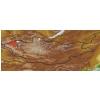
Mongolian Altai (i)In distribution data often named as '7' 
Middle Khalkha (i)In distribution data often named as '8' 
East Mongolia (i)In distribution data often named as '9' 
Depression of Great Lakes (i)In distribution data often named as '10' 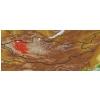
Gobi-Altai (i)In distribution data often named as '13' 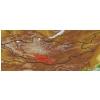
Dzungarian Gobi (i)In distribution data often named as '14' 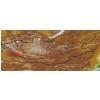
|
| Distribution Khangay: (i)acc. Flora Khangaya 1989 | I
II
III
IV
V
VI
|